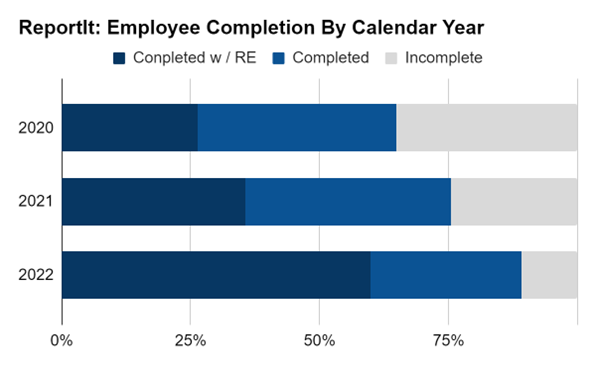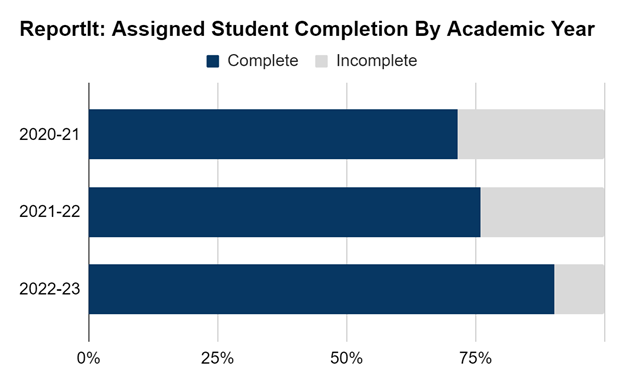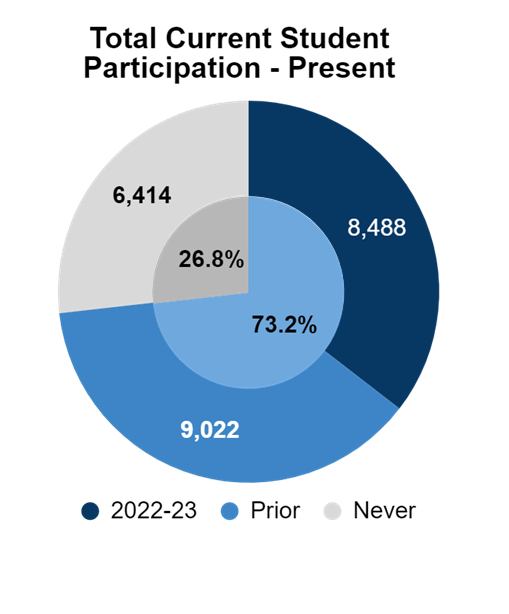Sexual Misconduct Prevention Progress Report 2023
Prepared by the Office of Equity and Access, April 2023
Through this 2023 Sexual Misconduct Prevention Progress Report, we aim to provide the University Community with an overview of Stony Brook University’s sexual misconduct prevention efforts and response. Stony Brook University's commitment to creating a safe and accessible environment free from all forms of discrimination, including sexual violence, for all members of the University Community remains steadfast.
Table of Contents
Section 1: Task Force Recommendations and Announcment
Section 2: Recent Investigation Statistics
Section 3: Training and Outreach
Section 4: New Title IX Regulations Anticipated
Section 1: Task Force Recommendations & Announcement
Jump to: Section 2 | Section 3 | Section 4
The annual Sexual Misconduct Prevention Progress Report provides an essential overview of the measures implemented by our organization to prevent and address sexual misconduct. Since the report's initial release in 20XX, the Ston Brook community has made significant progress in creating a safer environment for all individuals. However, we recognize that ongoing work must be done to ensure every community member feels respected, supported, and safe.
In light of this, in 2022, OEA established a multidisciplinary Title IX task force composed of students, faculty, and staff, who came together to make recommendations regarding sexual misconduct prevention and response at SBU.
The task force was divided into five subgroups:
- Student Concerns,
- Faculty Concerns,
- Staff Concerns,
- The Investigation Process, and
- Prevention, Outreach, and Education.
Task Force Identified Areas for Improvement
Each subgroup came together to focus on how OEA could address concerns, improve outreach efforts, and further educate the campus community about sexual misconduct, including Title IX, sexual harassment prevention, and reporting. Based on that input, recommendations that we believe will enhance OEA's ability to prevent and better address sexual misconduct were developed. We created a website to share the recommendations with the campus community. The recommendations were:
- Enhanced Candidate Background Checks: The task force recommended that we take an additional proactive step to ensure that candidates with a history of sexual misconduct do not become part of our community. A similar recommendation was made by the Association of American Universities (AAU), of which we are proud members. In response, the University launched the Enhanced Candidate Background Check pilot program.
- Increased Availability of Training, particularly In-Person Programming: OEA has provided in-person training since its inception and has made online Title IX training available to the campus community for nearly a decade. However, all of the Task Force focus groups stressed the need to continue providing in-person training and also to increase the amount of in-person training we offer.
- For Complainants, Respondents, and Witnesses: OEA will update the Sexual Misconduct website with FAQS and other information for complainants, respondents, and witnesses.
- Q&A with OEA for Academic Departments: OEA will launch its first Q&A with OEA for academic departments. This new program will allow faculty to ask questions in a non-training, non-investigative, small-group environment.
- Information for Parties: The office will continue to provide parties to cases with information about the investigative process that were moved to an online version during the pandemic.
In addition to the Task Force recommendations, the Title IX office will regularly review and update its Sexual Misconduct and Reporting policy as required by applicable law and assess whether additional updates are required to meet the needs of the SBU community.
Section 2: Recent Investigation Statistics
Jump to: Section 1 | Section 3 | Section 4
The University is required to compile anonymized information related to reported incidents of sexual misconduct under both the federal Clery Act and NY State Education Law 129b. The Clery Act's intent is to notify the campus community of the incidence of certain crimes (including some conduct that Title IX governs) that occur on or near campus. All colleges and universities that disburse federal financial aid are required under Clery to keep and disclose statistical data on the enumerated crimes that occur or within a specific geographic area of their respective campuses in an Annual Security Report to be published every year. 129(b) requires the University to report data on alleged incidents of sexual misconduct that impact students to the New York State Education Department (NYSED).
In addition to fulfilling our obligations under Clery and 129-b, OEA maintains records of all reported allegations of discrimination, including those based on sexual misconduct and violence, regardless of whether the accused or the reporting individual is a student, employee, or has some other status in our campus community.
We accept reports of sexual misconduct in various ways to ensure that all campus community members can report an incident, including via the ReportIt website. All allegations within the jurisdiction of OEA will be thoroughly investigated. The first chart below provides data on the number of allegations received in the last three years. Also, to ensure easier access for the Stony Brook community to report allegations of sexual misconduct around the clock, OEA created the ReportIt website. Those numbers are shown in the second chart.
Reported incidents involving sexual misconduct for January 2020 to December 2022
Table 1 - online submissions compared to total incidents reported.*
| Year | Website Submittion | Total incidents Reported |
|---|---|---|
| Year2020 | Website Submittion148 | Total incidents Reported191 |
| Year2021 | Website Submittion211 | Total incidents Reported211 |
| Year2022 | Website Submittion165 | Total incidents Reported177 |
*Incidents could be reported to OEA online, by email or phone, in person, on a paper form, or through partner offices. Many of these options, including online, allow for an anonymous report. Any allegation can be reported directly to OEA, the Title IX Coordinator, deputy coordinators, or responsible employees and is taken seriously. Once aware, OEA begins its process to address the report. This can take many forms, from providing resources to a formal investigation.
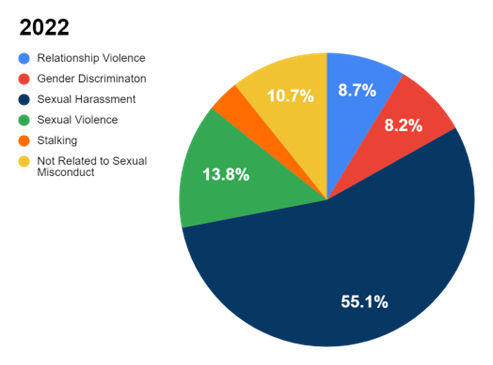 |
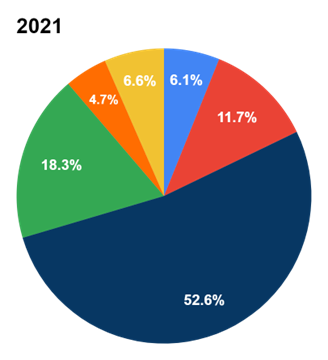 |
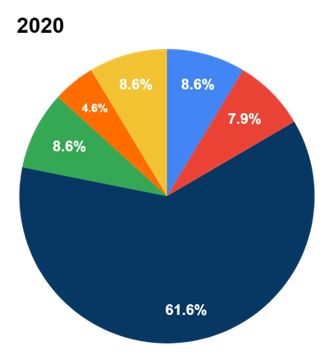 |
Table 2 - Allegations*
|
Anyone can report allegations related to University Policies. OEA has jurisdiction over policies related to discrimination and sexual misconduct.
* Allegations have been combined to align with commonly recognized categories. For common categories and their respective definitions, please see the University Policy Manual, Equal Opportunity/Affirmative Action Policy, and Sexual Misconduct & Reporting Policy.
**Some reports to OEA or Title IX do not involve sexual misconduct. The numbers in this table include all reports regardless of whether a subsequent review determined there was no sexual misconduct as outlined by university policies.
Section 3: Training and Outreach
Jump to: Section 1 | Section 2 | Section 4
The Office of Equity and Access remains focused on addressing reported complaints while using training and outreach to educate the campus community on our policies and procedures. We strive to ensure that everyone knows what to report, how to report, and that Stony Brook University encourages students, faculty, and staff to report any incident they are aware of or experience.
Our most visible training program is our online series under the umbrella of “ReportIt: Ending Sexual Misconduct,” which includes the following versions:
- Onboarding Employees
- Onboarding Responsible Employee
- Annual Review for Employees
- Annual Review for Responsible Employees
- Onboarding Students
- Annual Review for Students
- Annual Review for Mandated Reporters
Under New York state law, all employees must be trained on Stony Brook University sexual harassment prohibitions and procedures annually. Employees are assigned the onboarding or annual review version and are prompted to participate as responsible employees as appropriate.
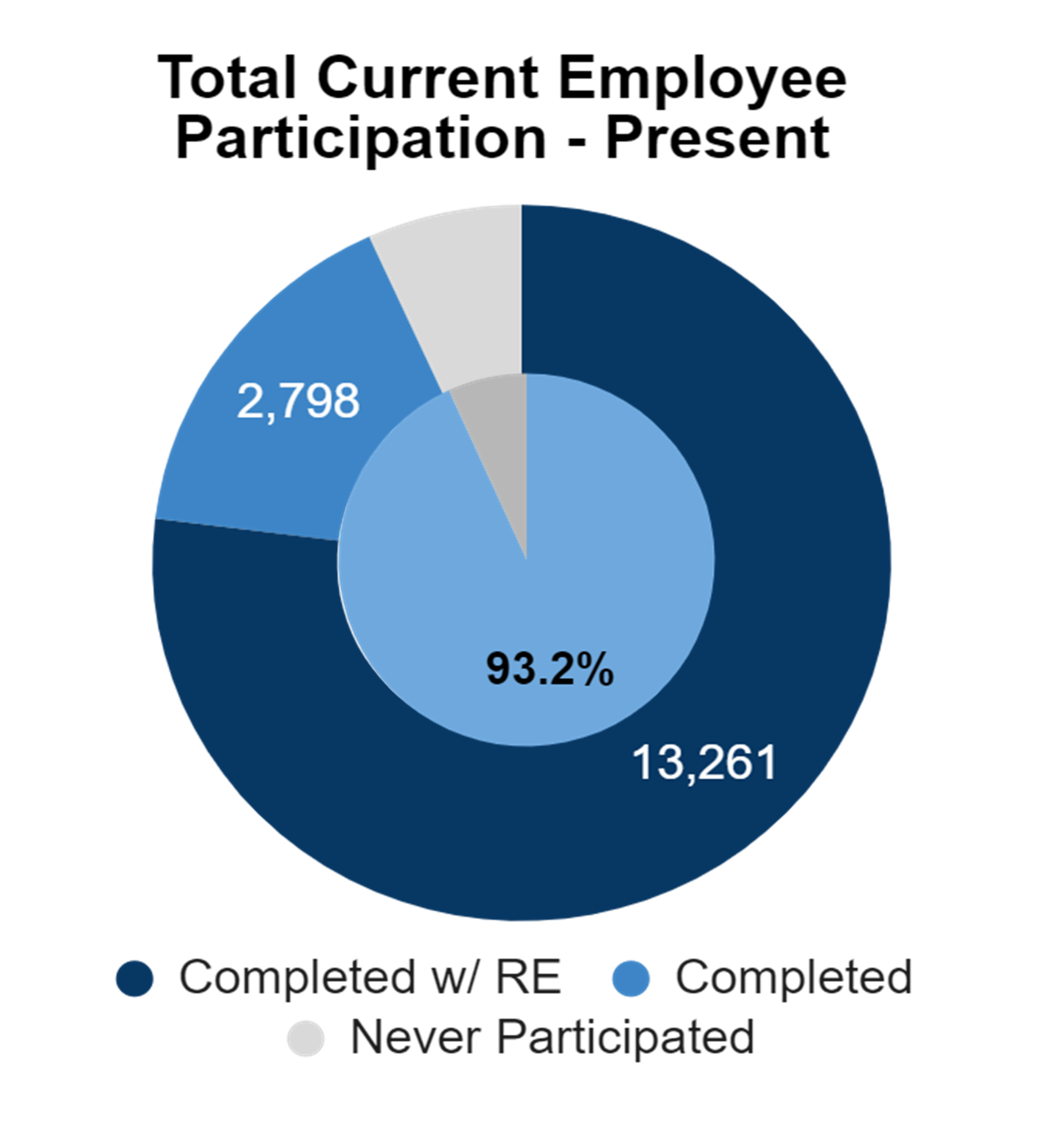 |
|
New York state law also requires onboarding students, student-athletes, and student-leaders to be provided training annually in sexual misconduct policy and procedure. These students are assigned the appropriate version of ReportIt as required.
Resident Assistants (RA) and other student workers who work directly with students may be assigned the Mandated Reporter program as appropriate.
In addition, OEA provides in-person programming to various employee and student departments or organizations as requested and appropriate.
|
|
|
In response to the recommendations of the Title IX Task Force and the high priority OEA places on training, outreach, and prevention, we are working on increasing the variety and availability of training. This will include increasing the campus community’s awareness of the ongoing availability of on-demand in-person training for departments and student groups. We will begin to offer open enrollment sessions to target faculty and graduate students. We are also developing multiple new online programs designed to provide information and resources to faculty-leading students abroad.
Section 4: New Title IX Regulations Anticipated
Jump to: Section 1 | Section 2 | Section 3
There have been several developments over the past few years related to Title IX protections for students, including the release of a policy roadmap outlining the Department of Education's regulatory agenda, the Interagency Task Force on Sexual Violence in Education's first report to Congress, and the introduction of proposed legislation called the Students' Access to Freedom and Education Rights Act ("SAFER Act").
The Department of Education's policy roadmap states that the final Title IX regulations will be released in May 2023, although this timeline is tentative and subject to change. The roadmap also suggests the release of final Title IX rulemaking specific to discrimination based on sex in athletics but does not provide a timeline for this.
The Interagency Task Force on Sexual Violence in Education, created by the 2022 reauthorization of VAWA, released its first report on November 30, 2022. The report addresses gaps and challenges in Title IX investigations, enforcement, and best practices in campus sexual violence prevention, investigation, and response. The report states that OCR is working on new Clery Act guidance and a standardized campus climate survey tool for higher education institutions. Still, it does not provide a timeline for completion.
Finally, the proposed SAFER Act introduced by Senators Bob Casey and Mazie Hirono aims to strengthen existing Title IX protections for students by broadening the definition of sexual harassment, strengthening protections against harassment based on sex and other factors, requiring robust institutional support for complainants, and investing in training for Title IX Coordinators and staff.
These developments suggest ongoing efforts to strengthen Title IX protections and prevent sexual harassment and violence in educational settings. It remains to be seen how closely any final regulations or legislation will reflect the drafts proposed and how they will impact, if at all, Stony Brook University’s policies or procedures. Stony Brook University and the Office of Equity and Access remain focused on addressing and preventing sexual misconduct, complying with all state and federal requirements, and improving student safety.

